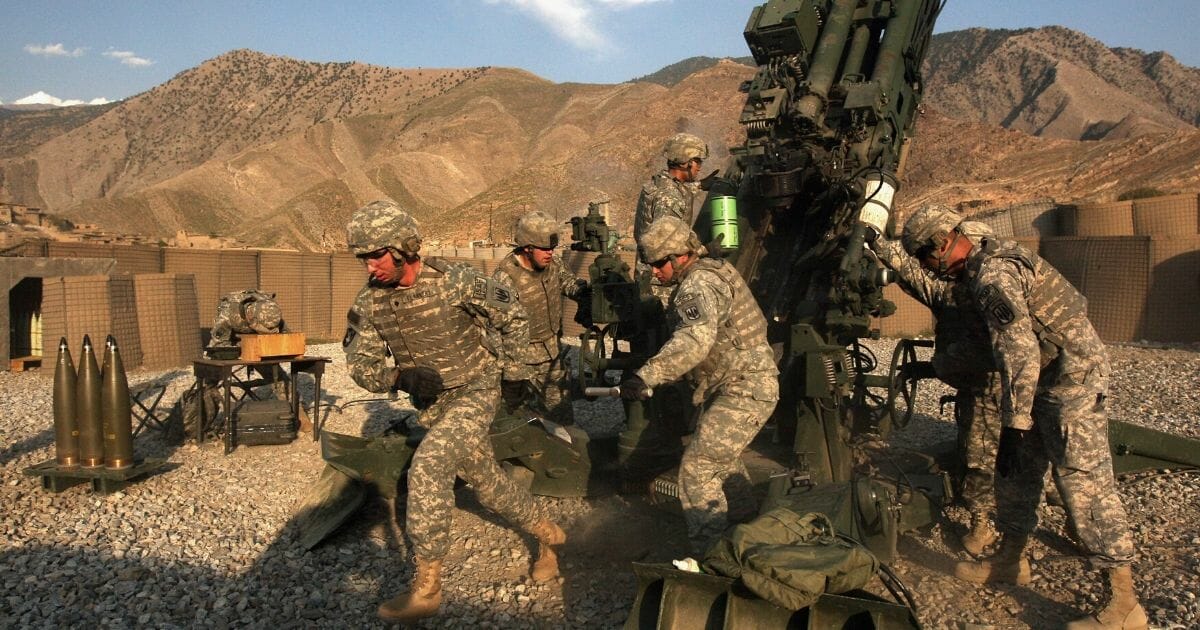
Countering Chinese Military, US Creating 'Game-Changing' 1,000-Mile Cannon to 'Disintegrate' Enemy Assets
We’re going to need a bigger cannon.
At least, that’s what the Pentagon apparently concluded — and it’s now developing a massive gun for the military that can reach targets of over 1,000 miles. It’s called the Strategic Long-Range Cannon, and it bridges the gap between 20th-century weaponry and today’s technology.
“The cannon, which the Army hopes to test by 2023, is part of the Pentagon’s broader effort to install ‘long-range precision fires’ in potential battlefields around the world,” The Washington Times reported on Wednesday.
“‘Super-guns’ were eagerly developed by the powers drawn into World War I, and Adolf Hitler pushed Nazi scientists (unsuccessfully) to develop a V-3 ‘Super Cannon’ to target London from bases across the English Channel,” the newspaper continued.
As history buffs know, the Germans instead turned to a different weapon — the V-2 rocket — to wreak havoc on London. That paved the way for rapid rocket advances after the war, with nations including the United States using the technology to build everything from intercontinental ballistic missiles to the Apollo space program.
But now it seems everything old is new again. The U.S. military is moving forward on plans to scale up existing artillery weapons to a size that could change the balance of a future conflict.
The reason for the change in strategy? China, and its potential ability to thwart U.S. aircraft carriers and other force deployments.
“China has put a heavy priority on a strategy known in military circles as anti-access and area denial (A2AD),” The Times explained. “Such a policy — a combination of defensive systems, artillery, radar and other tools — seeks to deny an enemy the ability to occupy or move through a specific area of land, air or sea.”
In simple terms, aircraft and missiles have become ever more complex in recent years. Many of them rely on GPS signals and remote links to carry out their missions. That makes them vulnerable to China’s jamming methods if a conflict arises, which could even include the destruction of American satellites.
“If executed correctly, the A2AD approach could keep U.S. ships, planes, drones and ground forces away from the fight,” noted The Times.
A Strategic Long-Range Cannon, however, isn’t actually all that complicated. Once a shell has been fired at a target, gravity and physics take over.
China’s “integrated system challenges even our most sophisticated aircraft and challenges our most sophisticated ships to gain access to the area,” Army Col. John Rafferty said in a statement to Defense News.
“One of the ways to solve that problem is to deliver surface-to-surface fires that can penetrate this [anti-access, area-denial] complex, disintegrate its network and create windows of opportunity for the joint force to exploit,” Rafferty added.
The mega-cannon isn’t ready for prime time just yet, but the Pentagon is confident in the project.
“We have run all the simulations that shows the feasibility we’ve procured, the material to start this,” Army Secretary Ryan McCarthy told The Times. “That capability […] can yield the outcome [that] would be a game-changing technology for us.”
Of course, nobody knows for certain how the next decade will play out. Potential adversaries like China may end up avoiding conflict, but history has shown that world stability often depends on being willing to pay the price of being prepared.
Truth and Accuracy
We are committed to truth and accuracy in all of our journalism. Read our editorial standards.
Advertise with The Western Journal and reach millions of highly engaged readers, while supporting our work. Advertise Today.












